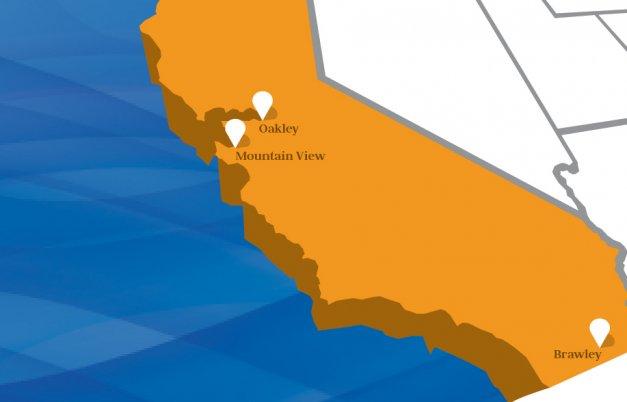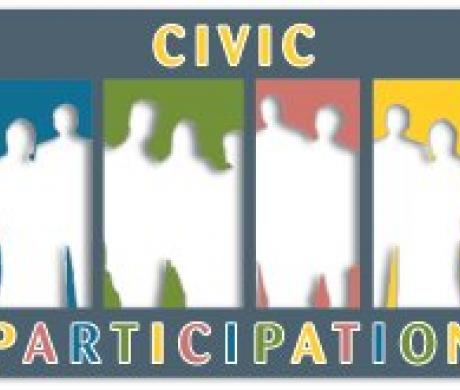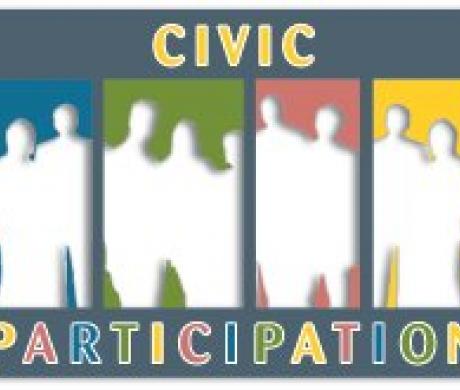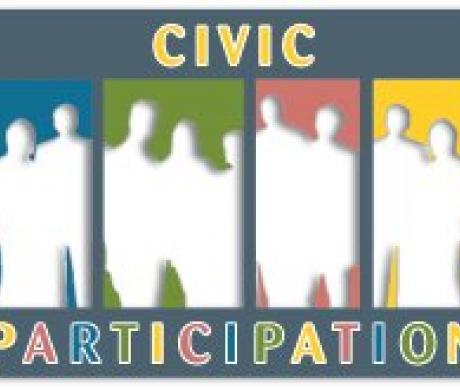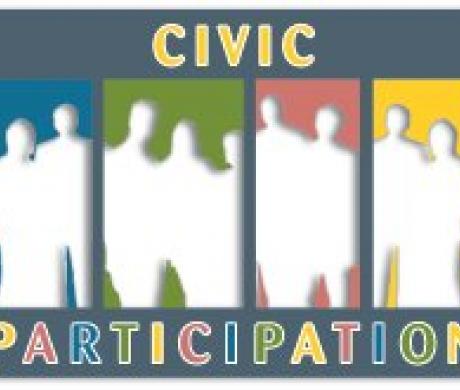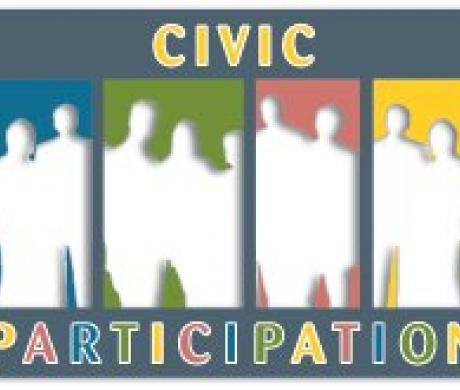Immigrants, the Economy and Civic Engagement
Sarah Rubin is public engagement program manager for the Institute for Local Government (ILG) and can be reached at srubin@ca-ilg.org. Mahvash Hassan is an immigrant integration and civic engagement consultant for ILG and can be reached at mhassanconsulting@gmail.com.
Immigrants are a critical part of the economy in California, which is home to over 10 million foreign-born residents who contribute $715 billion — about one third — of its gross domestic product each year. These individuals comprise 35 percent of the state’s civilian workforce. Their entrepreneurialism and innovative efforts are a driving force from Silicon Valley to the Central Valley and beyond. Immigrants work in enterprises that span Fortune 500 companies and small Main Street businesses revitalizing downtown corridors throughout the state.
California cities use a variety of strategies to engage their residents in civic life and foster inclusive, welcoming communities. Cities with policies and practices focused on inclusion build trust and relationships that lead to increased economic and civic engagement of immigrants and the broader community. Such welcoming efforts also lay the groundwork for innovative cross-sector partnerships that support workforce development and economic prosperity.
Border Travel and Transit Station Spur Economic Development
The City of Brawley (pop. 26,566) in Imperial County remains close to its rural roots. Farmers, ranchers and generations of Mexican-Americans call Brawley home. Those who traverse the U.S. border with Mexico to work, study or shop keep many traditional values alive in the Imperial Valley, and the U.S.-Mexico border plays a central role in the city’s economic activity. Mayor Sam Couchman describes this dynamic as “a unique symbiotic relationship.”
To improve access to services and air quality in the region, Brawley recently expanded its public transportation network. The city partnered with the Imperial County Transportation Commission and engaged local community groups, including the Latino Comite Civico Del Valle (Civic Committee of the Valley), to design a system that meets the community’s needs.
Brawley’s Transit Transfer Station now serves as the city’s central hub for Imperial Valley Transit and Gold Line buses for transit riders traveling to and from destinations within Brawley and throughout the Imperial Valley. The destinations span 22 new stops throughout the city and include retail destinations and the One Stop Employment Center.
The transit station was built on a previously vacant lot. City Manager Rosanna Bayon Moore says, “Soon after work began, we discovered buried fuel tanks on the site, which was identified as a brownfield. We worked with the transportation community to rapidly address these findings, and the brownfields status gave us access to additional funding.” The project’s overall budget was $1.5 million, with funding from many sources including the California Transit Security Grant program, American Recovery and Reinvestment Act, Federal Transit Administration and others.
“Residents were fearful at first that the transit station would make things worse and increase congestion. But the facility is very attractive and provides a nice enhancement for the area,” says Moore.
The transit station gives city residents better access to existing businesses. This stimulated economic activity and encouraged the development of an immigrant-owned gas station, convenience store and Del Taco on a prominent but long vacant parcel of land. It also helped the city attract more businesses, including a General Nutrition Center, AT&T and Starbucks. This investment, along with new construction of a Sun Community Federal Credit Union building, signaled confidence in the Highway 86 corridor that spurred additional capital investment.
Bilingual Support
Brawley has fostered an inclusive, welcoming environment for all its residents. “We are committed to stretching our public resources as far as they can reach to serve all of our residents,” says Mayor Couchman. For example, bilingual capacity is part of all city operations, which demonstrates the city’s commitment to making its services and outreach accessible for residents who may not be fluent in English.
On matters of major significance, the city provides simultaneous translation of public meetings in Spanish, using professional interpreters and sound equipment on loan from San Diego State University’s Imperial Valley campus.
The city also partners with the Mexican Consulate, which is based in El Centro, to offer mobile services at a city facility in Brawley. This effort provides assistance to Mexican nationals on a wide range of needs, including Mexican passports and consular IDs; birth certificates; information on immigration, family, civil and penal law; education and scholarships. The mobile consulate brings services to an easily accessible location and encourages resolution of issues commonly affecting local residents. The city acts as a co-convener, waives its usual insurance requirement and provides in-kind staff support for the event in a community room at the city library.
Community-Building and Economic Activity in the Heart of the Delta
You, Me, We = Oakley! is a multi-sector collaboration coordinated by the City of Oakley (pop. 40,141) in Contra Costa County. The program creates opportunities for its diverse residents (35 percent Latino, 7 percent African-American and 6 percent Asian) to come together, better understand one another, appreciate each other’s stories and recognize their common desire to build a stronger, safer and more vibrant community.
“We have had the fastest growing Hispanic population in the county since the year 2000. We want all our residents to feel welcome and a part of the community fabric and to be civically engaged,” says Oakley City Manager Bryan Montgomery. “The You, Me, We = Oakley! program has helped build stronger relationships between the city and community members.”
The City of Oakley and Oakley schools, businesses, faith congregations and community-based organizations collaborated to create the program. Its initiatives include police-community youth sporting events, citizenship workshops in partnership with community-based organizations and an advisory committee that addresses the needs of English-language learners and their families. A recent event brought together parents of students and active community members for a meal and to discuss the changing community. Parents talked about their common values and their goals for helping their children succeed in school as well as strategies for schools to increase communication with and engagement of parents.
“Improved communication between the city, residents and the business community set the stage for partnerships to build and expand some of the local retail establishments as part of the city’s downtown revitalization efforts,” says Montgomery.
In addition to in-kind and other indirect cash funding from the city, Oakley received approximately $500,000 in grant funding from Welcoming America, Y&H Soda Foundation and the Zellerbach Foundation to help fund these efforts.
Embracing Inclusion in Mountain View
Statewide, immigrant workers comprise 57 percent of software developers. “If we didn’t have immigrants, we wouldn’t have Silicon Valley,” says Alex Andrade, economic development manager for the City of Mountain View (pop. 77,925), which is often described as the “start-up” community of Silicon Valley. The city’s downtown area is home to many early-stage tech and biotech/life science companies. Locally based firms include Google, Intuit, Symantec, LinkedIn and others.
In addition to embracing innovation, the City of Mountain View is committed to fostering mutual understanding and promoting respect, inclusiveness and involvement. As part of that commitment, the city recently launched a Spanish Language Civic Leadership Academy as a pilot project.
Over 21 percent of Mountain View’s population and 41 percent of the students in its public schools come from Hispanic families. The Spanish Language Civic Leadership Academy’s goal is to improve residents’ understanding of government and city services and increase civic engagement, leadership and volunteerism in the city. Conversations with community members identified the topics to be covered, and city staff from numerous departments helped design and are facilitating the eight-session curriculum.
Participants in the pilot:
- Learn how Mountain View’s city government functions;
- Gain a basic understanding of services and programs provided by each department;
- Meet elected officials and staff;
- Learn how residents can become engaged and involved in issues that affect their community;
- Get to know their neighbors; and
- Serve as role models and a resource for other community residents.
Participants who complete the academy program also learn how to obtain a business license, report a crime, access city services and inform local decision-making processes.
The pilot’s budget of $4,000 came from the city’s General Fund.
Tips for Engaging Immigrants in Civic Life
Understand who lives in your city. Analyze local populations to help understand the economic potential in your community. Using the latest census data can be useful, but demographic changes may outpace this information. Immigrant organizations and leaders, including ethnic chambers of commerce, ethnic media and local clergy, can help identify your new residents’ countries of origin, the languages spoken, the print and electronic media of choice and business and cultural norms.
Overcome language and cultural barriers. Build on your understanding of cultural and business norms to enhance city staff’s language and cultural capacity, and create workforce or business development practices to minimize barriers to the full economic participation of all residents.
Build leadership capacity of newcomers. Provide training and leadership opportunities for immigrant groups, such as citizen academies, English language classes, leadership training and appointments to local boards and commissions. As appropriate for your community, consider leadership academies or training directed to specific communities and held in residents’ native language or interpreted.
Foster an inclusive, welcoming community. Recruit support from leaders in faith-based congregations, schools, ethnic media, the immigrant business community, cultural organizations and service providers in reaching out to immigrants. Your engagement efforts will be more successful if someone known and trusted by each immigrant community invites community members to participate.
ILG Offers Interpretation Equipment to Cities
Language barriers are a frequent challenge to increasing public engagement. Providing accurate and culturally informed interpretation that makes sense and reflects cultural nuances, including humor — as opposed to just a literal interpretation — can broaden community participation and improve the meeting outcome. The Institute for Local Government lends interpretation equipment at no cost to cities.
The digital meeting interpretation equipment supports simultaneous interpretation of public meetings. Each set consists of 40 receivers and headsets as well as the transmitter and speaker/headset for the person interpreting. The equipment is easy for interpreters and meeting participants to use, and each set contains instructions in both English and Spanish. For more information, contact Hanna Stelmakhovych, public engagement program assistant, at hstelmakhovych@ca-ilg.org.
Related Resources
Institute for Local Government Resources
A Local Official’s Guide to Immigrant Civic Engagement
Engaging Immigrant Communities: Best Practices & Resources
Local Governments Engaging Immigrants: Strategies that Work
Providing Language Access: Tips for Local Officials
Ethnic Media: Tips to Reach the Fastest Growing Segment of American Media
10 Ideas to Encourage Immigrant Engagement
For tips on how to better engage and integrate immigrants in your community and examples of city efforts in this area, visit www.ca-ilg.org/immigrant-engagement-and-integration.
Mountain View Spanish Language Civic Academy
The Contributions of New Americans in California: The Role of Immigrants in the Broader Workforce
Welcoming Policies and Practices Stimulate Economic Development
The City of San José (pop. 1,042,094) has struggled with engaging and integrating its immigrant communities. To improve its efforts, the city developed a three-year immigrant integration plan to build upon the numerous strengths and contributions of the immigrant community and connect it with longer-term residents, community partners and local government. City Manager Norberto Duenas says, “One of the goals of this plan is to expand economic opportunity for immigrants by helping them improve job skills, grow immigrant-owned small businesses and generate employment opportunities.”
Objectives to help reach that goal include:
- Promoting skill development and career pathways to address the existing local skills gap;
- Exploring and participating in partnership opportunities (inside and outside the city) to support the financial literacy needs of immigrant residents; and
- Developing and implementing a plan to support current and future immigrant-owned business.
Strategies to support current and future immigrant-owned
businesses include:
- Adopting practices that reach out to, encourage and help small or minority-owned businesses to bid on city projects;
- Providing information and appropriate outreach to immigrant communities about resources for starting businesses in San José;
- Convening neighborhood and business associations to identify strategies that support economic growth and progress for immigrant workers and their communities; and
- Involving corporate ethnic affinity groups in “welcoming” activities.
“Data shows that immigrants are a vital part of Silicon Valley. It’s important that we not only recognize their contributions, but support efforts that expand their potential,” says Jeff Ruster, director of strategic partnerships at the San José Office of Economic Development.
This process was funded by the city and local philanthropic institutions, including the Silicon Valley Community Foundation. One full-time and one part-time staff member from the city manager’s department managed the planning process with technical assistance from the Institute for Local Government and support from local, regional and national experts. To read the entire Welcoming San José Immigrant Integration Plan, visit www.sanjoseca.gov/DocumentCenter/View/61918.
Share Your Story
The Institute for Local Government (ILG) has been working with cities to help engage and integrate immigrant communities for over ten years. Since this field is ever evolving, we want to hear from you. Has your city used an innovative and effective approach to engage immigrants in your community? Contact Hang Tran at htran@ca-ilg.org to share your story with ILG.
Photo credit: BomSymbol,TH/thenounproject.com (dollar bill icon)
This article appears in the May 2017 issue of Western
City
Did you like what you read here? Subscribe to Western City

